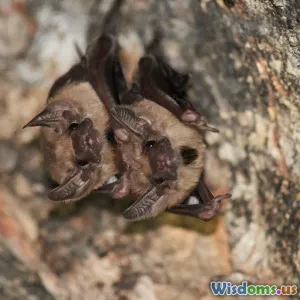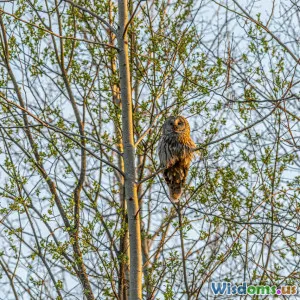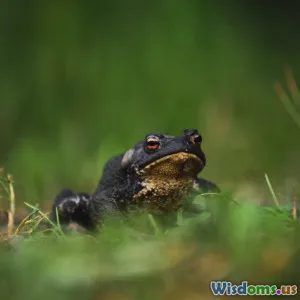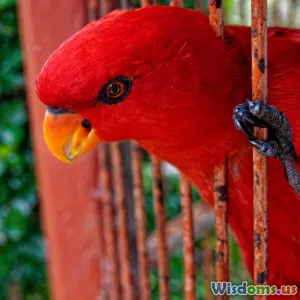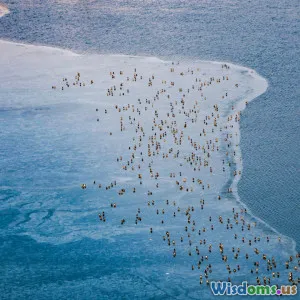
Wildlife Migration Patterns
8 min read Explore the fascinating world of wildlife migration patterns and discover the science behind these epic journeys. (0 Reviews)
Wildlife Migration Patterns: Nature’s Epic Journeys
Migration is one of the most awe-inspiring phenomena in the natural world. Across diverse habitats and continents, billions of animals embark annually on remarkable journeys driven by instinct, survival, and reproduction. These movements—wildlife migration patterns—are essential for maintaining ecological balance, genetic diversity, and species persistence. But what triggers these mass relocations, how do animals navigate vast and often hostile environments, and what challenges do they face in a rapidly changing world? This article delves deep into the science, examples, and significance of wildlife migration.
What is Wildlife Migration?
Wildlife migration refers to the predictable, often seasonal, movement of animals from one habitat to another and back. It usually follows cyclical patterns tied to environmental cues like temperature, food availability, and breeding needs.
Unlike daily animal movements within home ranges, migration covers much larger distances and occurs at specific times of the year. Migratory animals may include birds, mammals, fish, insects, and even some reptiles.
Example: The Arctic tern undertakes the longest migration on Earth, traveling about 70,000 kilometers annually from Arctic breeding grounds to Antarctic feeding areas.
Drivers of Migration: Why Do Animals Migrate?
Resource Availability and Seasonality
Central to migration is the quest for food and optimal living conditions. In temperate and polar zones, seasonal shifts often mean scarcity of forage or prey during colder months. Animals migrate to follow productive ecosystems.
- Wildebeest in Serengeti: These herbivores travel over 1,800 miles each year to find fresh grass and water, tracking the rainfall patterns in East Africa. This migration supports one of the largest overland animal gatherings on the planet.
Reproduction and Offspring Survival
Many species migrate to breeding grounds where conditions maximize offspring survival.
- Salmon: Born in freshwater, they migrate to the ocean to mature then return to their birth rivers to spawn, ensuring their young start in optimal habitats.
Predator Avoidance and Safety
Migration can also provide temporary refuge from predators or harsh environmental conditions.
- Monarch Butterflies: These butterflies migrate thousands of kilometers from North America to overwinter in Mexican forests, avoiding freezing temperatures.
Climatic and Environmental Cues
Changing day lengths, temperature shifts, and other environmental cues trigger hormonal changes that initiate migration. Animals have evolved internal biological clocks synced to seasonal cycles.
Navigational Marvels: How Do Animals Find Their Way?
One of the most fascinating aspects of wildlife migration is the precise navigation used by animals.
Earth's Magnetic Field
Many birds and sea turtles detect Earth's magnetic field to orient themselves during migration.
Research shows that magnetoreceptors in birds' eyes convert magnetic information into visual patterns, helping them "see" magnetic fields while flying.
Celestial Navigation
Some species use the sun, moon, and stars for guidance.
- Sea turtles hatchlings use the brightness of the horizon over the ocean at night to find the water.
Olfactory Cues
Fish like salmon are believed to recognize chemical signatures of their natal streams to return and spawn.
Social Learning and Landmarks
Caribou herds follow traditional migration routes learned over generations, relying on familiar topographical features.
Noteworthy Migration Patterns in Wildlife
Bird Migrations
-
Bar-tailed Godwit: Holds the record for longest nonstop flight, traveling nearly 13,000 km from Alaska to New Zealand.
-
Arctic Tern: As mentioned, flies between polar regions, experiencing two summers per year.
Mammalian Migrations
-
Elephants in Africa: Seasonal movements between dry and wet regions to access water and food.
-
Wildebeest: As described, the Serengeti migration is crucial for ecosystem health.
Insect Migrations
-
Monarch Butterflies: Their multi-generational migration spans North America.
-
Dragonflies: Some species migrate thousands of kilometers across continents.
Marine Migrations
-
Humpback Whales: Annual migrations between tropical breeding grounds and polar feeding areas.
-
Eels: Migrate between freshwater rivers and deep ocean spawning sites.
Ecological and Human Impacts on Migration
Environmental Changes and Habitat Loss
Urbanization, deforestation, and climate change threaten migratory routes and stopover habitats.
- Loss of wetlands in North America has reduced resting sites essential for migratory birds.
Climate Change Effects
Warming temperatures disrupt the timing of migration and food availability.
- Mismatches between arrival times and peak food availability can reduce survival and reproductive success.
Barriers and Fragmentation
Construction of roads, dams, and fences obstruct traditional migration corridors.
- For instance, highways in North America have fragmented pronghorn migration routes.
Conservation Efforts
Protecting migratory species demands international cooperation because these animals traverse multiple countries.
Key Strategies
- Creating Protected Corridors: Such as in the Serengeti-Mara ecosystem.
- Restoring Stopover Sites: Wetlands for migratory waterfowl.
- Research and Monitoring: Satellite tracking, banding studies.
- Policy Frameworks: Agreements like the Migratory Bird Treaty Act and CMS (Convention on Migratory Species).
Community Involvement
Engaging local populations helps balance human needs with wildlife protection.
- Ecotourism linked to the Great Migration in Africa brings awareness and funds.
Conclusion: The Call to Understand and Protect
Wildlife migration embodies the resilience and complexity of nature. These epic journeys sustain ecosystems and connect landscapes across continents. Yet, human-driven changes threaten their future.
Understanding migration patterns equips us to safeguard these natural phenomena, ensuring they continue to inspire and maintain biodiversity. Protecting migration routes is not only about conserving species—it's about preserving the pulse of our planet’s living web.
As renowned biologist Dr. E.O. Wilson said, "The future of the world’s biodiversity depends on how we protect migratory species and their corridors that knit ecosystems together."
Let us take action to study, respect, and conserve migration patterns, honoring the timeless journeys etched in the rhythm of life.
References
- Wilcove, D.S., et al. (2008). Animal Migration and Conservation Challenges. Science.
- Newton, I. (2010). The Migration Ecology of Birds. Academic Press.
- Chapman, J.W., et al. (2015). Animal Orientation and Navigation. Current Biology.
- WWF: Serengeti Migration Overview
Rate the Post
User Reviews
Popular Posts










